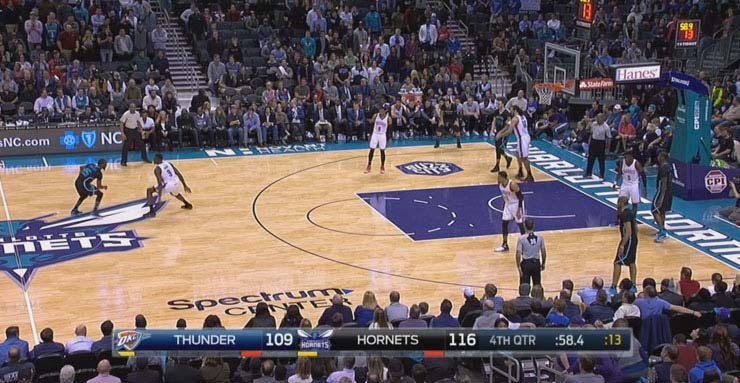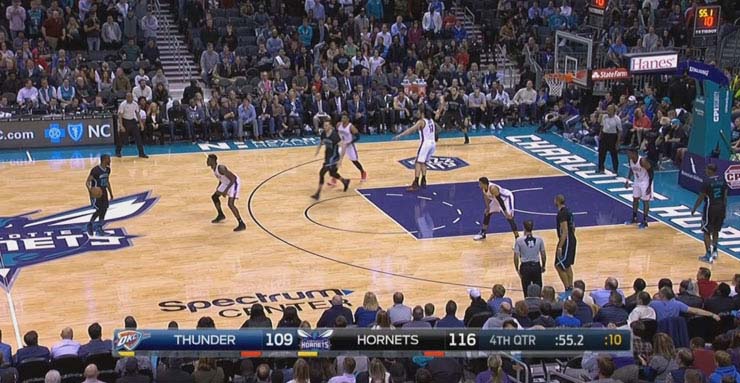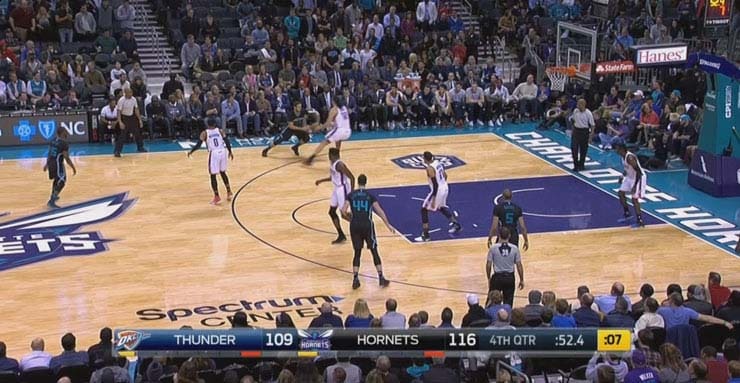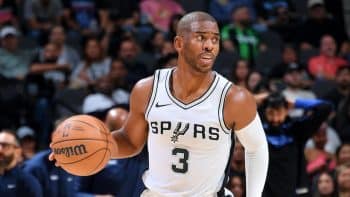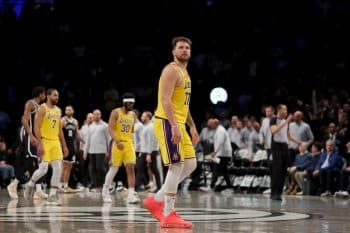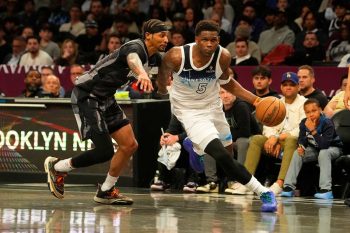NBA
The Big 3: Lowry, West 8-Seed and Play of the Week
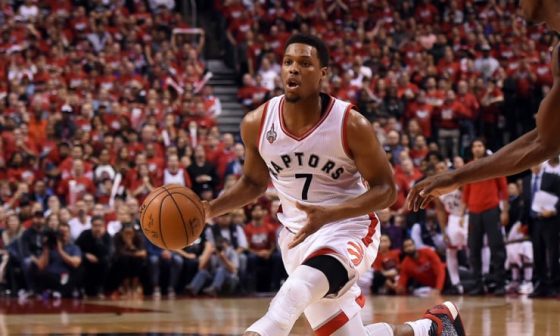
Welcome to this week’s edition of The Big Three, where we canvass the league for a few big themes from the week that was. We’re back from a brief holiday break – let’s get started!
This week’s column features an under-the-radar MVP candidate, one of the weirdest races for the eight-seed we’ve seen out West in decades, and a Play of the Week that helps illustrate a new defensive trend sweeping the league. All statistics are prior to Saturday’s games.
Kyle Lowry, Legit MVP Candidate
The MVP debate always starts out with a relatively wide net, typically led by a few frontrunners, before it narrows to include just those frontrunners plus a couple of fringe candidates. We’re roughly reaching that point this season: James Harden and Russell Westbrook appear to have distanced themselves in most conversations, with LeBron James, Kevin Durant and perhaps a guy like Giannis Antetokounmpo or Kawhi Leonard dotting the margins. If the vote was today, it’s likely we’d see Harden and Westbrook split the majority of first-place nods.
Based on all the past indicators of MVP success, though, we need to be adding another name to the list: Kyle Lowry.
It seemed to many (this pen included) as if Lowry had hit a bit of a plateau last year during his age-29 season. After all, he set career highs in virtually every major efficiency-related category while leading the Raptors to the most successful season in franchise history. However, there were hints of potential regression in his game.
So much for that. Lowry set his own career high in True Shooting percentage last year with a .578 mark, but he’s blasting that to smithereens so far this year – up to .642, the highest figure in the league for a guard (per basketball-reference.com). He’s finishing at the rim more effectively than ever before in his career, lighting nets on fire from floater range and sitting in the league’s top 10 for three-point shooting despite a ridiculous average level of difficulty.
In fact, Lowry’s shooting this season is eerily similar to the two-time defending MVP who has become synonymous with difficult shot-making. Lowry isn’t approaching Stephen Curry’s legendary 2015-16 campaign, of course – there’s a strong chance no one ever will – but take a quick gander at a comparison of their shooting metrics and you’ll see he’s right on par with Curry’s first MVP season:
Curry 2014-15: 48.7% FG, 44.3% 3P, .638 TS%, 42.0% on pull-up 3-pointers (per SportVU data)
Lowry 2016-17: 47.7% FG, 44.5% 3P, .642 TS%, 41.7% on pull-up 3-pointers
Curry’s 2014-15 numbers were on a bit more volume and perhaps a higher degree of difficulty, but those are nearly identical shooting figures.
Lowry currently sits fourth in ESPN’s Real Plus-Minus, trailing only Chris Paul, Antetokounmpo and James. The Raptors’ offense sputters and dies when he leaves the floor and his bench mobs that open the second and fourth quarters of most games are a big reason the Raptors still sit within shouting distance of the Cavs for the top overall seed out East. Lowry deserves to at least be on the margins of the MVP conversation and more of this over the next couple months could even get him up there with the main guys.
West 8-seed, Anyone? Going Once…
As of this writing, the Portland Trail Blazers – they of the glamorous 16-22 record, for a .421 winning percentage – sit in the eighth seed in the West. They’re jockeying with fellow sub-.500 teams for that final spot and a huge line of delineation seems to have been drawn between the eight-seed and the top seven teams in the conference.
Folks familiar with how dominant the West has been in recent years will recognize this as a rare occurrence, but perhaps won’t be aware of exactly how rare.
There have only been two teams in the last 20 years who have finished even directly at .500 and made the playoffs in the West: Houston last season and Minnesota during the lockout-shortened year in 1998-99. It was a full two decades ago that anyone got in at below .500 – three teams actually all did in the same year in 1996-97.
The West’s general dominance over the East hasn’t let up, by any means; the West is still 109-94 against the East on the year. But this is a rare gap in power structure we haven’t really seen since the current chasm between the conferences developed. With four teams in the West currently winning over 60 percent of their games (and the Utah Jazz and Memphis Grizzlies right on that line as of this writing), it’s looking like things have gotten even more top-heavy than usual – and the Warriors, driving that top-heaviness in large part, are in line for a historically weak first-round opponent if current standings hold.
Play of the Week
NBA offense and defense are in a constantly evolving chess game, only if just the top 30 grandmasters in the world played each other over and over and all 28 others sat and watched every game. Little tweaks that work make their way into other playbooks, sometimes immediately or sometimes over a few months or an offseason.
As the NBA’s rise in pick-and-roll play has spread, one of the counters that has eventually manifested has been switch-everything defenses to prevent damning rotations. For teams with multiple talented screener options, the next logical chess move has been to search for the best potential switching mismatch available, then go at that repeatedly while avoiding where the switch the defense “wants” to go to.
During set play moments at the end of big games, though, defenses have found a new counter. Many offenses are pretty transparent about their desire to run pick-and-roll during these moments and defenses who know it’s coming have started dictating some of their own action guarding screens.
The Warriors with Draymond Green in the 2016 playoffs were among the first teams to pull this trick out, though it’s possible someone else was the true innovator. In this example from the Oklahoma City Thunder late in an eventual loss to the Charlotte Hornets on Wednesday, see if you can spot what Oklahoma City does. Pay special attention to Russell Westbrook, initially positioned at the top of the screen on the right.
As the play begins, note how Westbrook is mostly hanging a bit higher than usual in the middle area between his man on the baseline and ball-handler Kemba Walker (and note how Andre Roberson is doing the same on the other side of the court, in case the pick comes from there).
As the play develops, it turns out that Steven Adams’ man, Frank Kaminsky, is coming up to set the pick for Walker – not Westbrook’s man, Marco Belinelli. But that doesn’t matter to the Thunder. Their primary goal is making sure they have a guy who can switch the upcoming pick and take over on Walker without giving up a huge edge.
Westbrook executes the switch and the Thunder get what they want: Walker gets the ball out of his hands. He passes to Belinelli and while the Hornets do end up getting free-throws out of this, it still has to count for a process win for Oklahoma City. Belinelli isn’t a particularly creative dribbler, and while he’s certainly quicker than Adams, he’s a far better option than Kemba in that same situation. Also, by forcing the pass away from Walker and wasting a couple extra seconds, the Thunder have run the shot clock down below seven – they can give Adams solid help if he gets beat.
They didn’t execute it perfectly here, but a careful eye can see how useful this tactic can be. Teams can designate a “roll man defender” like they did with Westbrook here, knowing that they’ll have a good matchup on the primary ball-handler they’re honing in on. If the offense wants to exploit a mismatch, they’re forced to do so using a secondary playmaker who probably isn’t as talented or experienced going one-on-one in these big situations. Otherwise, they won’t be able to create any major creases in the defense.
Of course, know that the best offensive coaches are out there scheming the next counter here. Maybe teams fake a screen from one man and run it with another in a way that frees up an open rim run, or maybe they slip the pick more quickly and catch the switchers napping. If we see the next variation, we’ll update it here.
